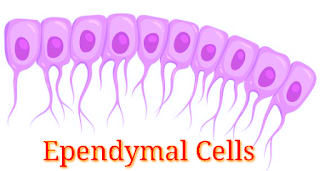DIABETIES :- Diabetes Mellitus is a chronic metabolic disease. which is characterised by hyperglycemia resulting from insulin deficiency or insulin resistance.
 |
| Diabetic Mellitus |
SYMPTOMS :-
3P :-
- Polyuria (frequent urine)
- Polyphagia ( very hungry)
- polydipsia ( very thirsty)
- feeling tired
- blurry vision
- weight loss
- delay wound healing
HYPERGLYCEMIA
High blood sugar/ high sugar level in blood.
HYPOGLYCEMIA
Low blood sugar with a glucose value of usually less than 70mg/dl
CAUSES
- To high dose of medication ( Insulin/ antidiabetic medication )
- Delayed Meals
- Exercise
- Alcohol
SYMPTOMS
- Shakiness
- Anxiety
- Sweating
- Irritability or Confusion
- Fast heart beat
- Dizziness
- Hunger and nausea
- Headaches
- Weakness
- Seizure/Unconsciousness
TREATMENT
- Consume simple carbohydrates like half cup sweetened juice, 3 tablespoons of sugar, honey, chocolates or hard candy.
- Recheck your blood glucose after 15 minutes.
- If hyperglycemia continues, repeat the glucose supplements.
- Once blood glucose returns to normal snack at the earliest.
NOTE :- If hypoglycemia is not getting corrected, attend any nearby medical facility.
TYPES OF DIABETES
There are mainly two types of diabetes
1. Type 1 Diabetes ( Insulin Dependent Diabetes Mellitus )
2. Type 2 Diabetes ( Non-Insulin Dependent Diabetes Mellitus)
 |
| Difference between Type 1. Diabetes and Type 2. Diabetes |
DIABETIC FOOT CARE
- check your feet everyday.
- you may need a mirror to look at the bottom of your feet (if you are obese or. have joint problem).
- Look for any sign of redness, swelling, ulcer, pain, numbness or tingling in any part of your foot.
- Wash your feet with lukewarm water and mild soap.
- Dry your feet with towel especially between the toes.
- Use a soft towel and pat gently, do not rub.
- Keep skin smooth by applying a cream or lotion.
- Keep your feet dry befor putting on socks or shoes.
- Do not go barefoot.
- Do not let your feet get too hot or cold.
- Cut toe nails straight with nail cutter across to avoid ingrown toe nails. If your nails are brittle, soak your toe nails in warm water to soften them before cutting.
- Do not use scissors, blades.
- Do not treat corns on your own.
- Do not wear shoes without socks.
- Do not wear sandals or other open toed shoes.
- Avoid high healed and pointed toes shoes.
- Wear socks (cotton/woolen) that are half inch longer than your longest toe.
- Do not wear strech socks, nylon socks.
- Do not wear uncomfortable shoes.
- Shop for new shoes at the end of the day, when your feet are little swollen.
- Wear new shoes for not more than one hour/day for several days.
- Change socks and shoes everyday.
- Have two pair of shoes so that you can switch pairs every other day.
How can I control my diabetes naturally?
- Focus on high-fiber foods like vegetables, whole grains, and legumes.
- Avoid refined carbs and sugary snacks. Opt for low-glycemic-index foods.
- Aim for at least 30 minutes of daily physical activity (walking, yoga, or strength training). It improves insulin sensitivity.
- Drink plenty of water to regulate blood sugar levels.
- Practice mindfulness, meditation, or deep breathing to reduce cortisol, which can affect glucose levels.
- Ensure 7–8 hours of quality sleep to stabilize blood sugar and improve energy levels.
- Check levels regularly and track patterns to adjust your diet or routine accordingly.
- Always consult a healthcare professional for personalized advice and medication adjustments. With discipline, diabetes can be managed effectively.
- Wash your hands and gently roll the insulin vial between your palms, never shake.
- If using a new vial, inspect the insulin for any sediments and remove the flat top from the vial.
- Insert air equivalent to the desired dose of insulin into the vial with the needle and syringe.
- Turn the vial and syringe upside down, and ensure that the tip of the needle is in the insulin. Pull back on the plunger of the needle till desired dose.
- Inspect the insulin in the syringe for any bubbles, If bubbles are present then remove the needle from the vial and discard the bubbles.
- Clean the site, pinch the skin and insert the needle perpendicular, (at angle of the person is very thin) and inject the insulin completely.
- Count till 10 before withdrawing the syringe.
HOW TO INJECT INSULIN USING A PEN DEVICE
 |
| Image of Insulin Pen |
- Wash your hands and gently roll the insulin pen between your palms.
- Remove the pen cap and make sure that the insulin is evenly mixed without any particles.
- Wipe the tip of the pen where the needle will be attached with an alcohol swab.
- Remove the pull-cover from the needle and screw it on to the pen till it is snug.
- Remove the plastic inner and outer cap from the needle.
- Dial upto 2 units at the dose window and keeping the needle and pen upright press the inject button till a drop of insulin appears at the needle tip.
- Dial the desired dose on the dial window of the pen.
- With one hand pinch the skin where you want to inject the insulin and with the other hand hold the pen with the thumb free to press the inject button.
- Inject the needle under the skin at 90 degrees and press the inject button all the way to zero.
- Keep the button pressed for upto ten seconds and then withdraw the needle.
- Carefully replace outer needle cap on the needle and unscrew it.
 |
| Method of Insulin using Pen device |
Human Circulatory System/ Blood Vascular System
Atrial Fibrillation/Atrial Flutter




















.webp)








